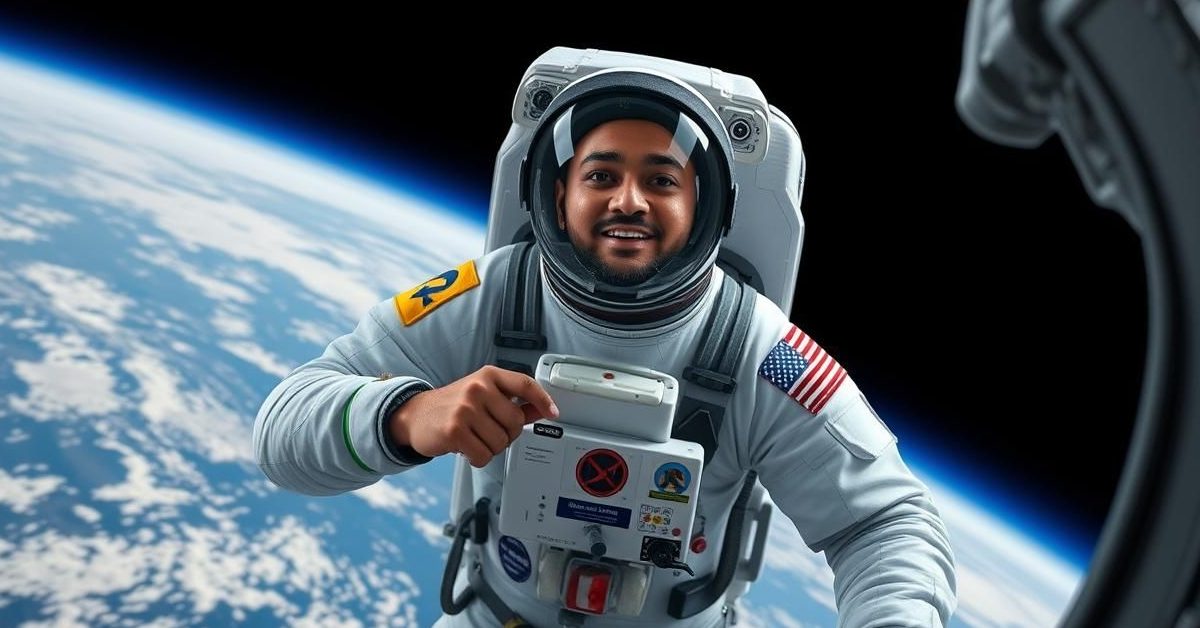Indian astronaut Group Captain Shubhanshu Shukla has returned to Earth after an 18-day mission on the International Space Station, marking a significant step for India’s human spaceflight program.
Shubhanshu Shukla’s Successful Return
After orbiting Earth 288 times aboard the International Space Station (ISS), Indian astronaut Group Captain Shubhanshu Shukla and his three Axiom-4 mission colleagues splashed down safely in the Pacific Ocean. Their journey back from the ISS took about 20 hours.
This mission not only strengthens India’s presence in human spaceflight but also highlights its growing contribution to global space research. Shukla conducted a series of important experiments while in orbit, showcasing India’s scientific capabilities.
Groundbreaking Experiments in Microgravity
During his time on the ISS, Shukla successfully completed all seven scheduled microgravity experiments and other scientific tasks. These pioneering studies aimed to understand how life behaves in space and how humans can sustain longer missions.
Pioneering Research for Future Missions
- Space Microalgae and Cyanobacteria: Shukla studied microalgae to explore their potential for generating food, oxygen, and biofuels in space. He also compared cyanobacteria strains to understand microgravity’s impact on their growth, which could aid carbon and nitrogen recycling in space.
- Myogenesis Study: Observations and sample collection were conducted to understand muscle cell behavior in space. The findings could lead to treatments for muscle-wasting diseases on Earth and help astronauts on long-duration missions to the Moon or Mars.
- Sprouting Seeds for Space Farming: As part of the Sprouts project, Shukla observed methi and moong seeds germinating in space. This research aims to identify plants suitable for sustainable farming in microgravity and develop climate-resilient varieties for Earth.
- Tardigrades: Nature’s Resilient Survivors: Research focused on the Indian strain of Tardigrades, also known as “water bears.” The objective was to identify the genes responsible for their remarkable resilience to extreme conditions, a key insight for understanding life’s adaptability.
Ensuring Astronaut Well-being and Technology Interaction
Shukla and his crewmates participated in various studies focused on astronaut health and safety. These included measuring radiation exposure, monitoring mental and cardiac health during prolonged spaceflight, and exploring ways to combat muscle loss in microgravity.
The Voyager Display experiment was another crucial part of the mission. Designed by IISc, Bengaluru, it investigated how humans interact with electronic displays in microgravity and whether screen usage contributes to stress or fatigue for astronauts.
The Axiom-4 Mission Explained
The Axiom-4 mission launched on June 25, 2025, carrying four astronauts, including Shubhanshu Shukla. The crew, led by American commander Peggy Whitson and including Slawosz Uznanski-Wisniewski from Poland and Tibor Kapu of Hungary, traveled to the ISS on a SpaceX Dragon spacecraft atop a Falcon 9 rocket.
This mission was operated and managed by Axiom Space, a private US space company, highlighting the growing role of commercial entities in space exploration.
Understanding Space Travel Mechanics
Why Splashdown is Preferred
When a spacecraft re-enters Earth’s atmosphere, it decelerates significantly due to friction. Splashing down in the ocean is safer because water’s low viscosity and high density provide a cushioned landing. Additionally, the vast open spaces of the ocean reduce the risk of hitting obstacles compared to land landings.
Astronaut Reconditioning Post-Flight
After returning from space, astronauts undergo a reconditioning process. This helps them adapt to Earth’s gravity, dealing with symptoms like dizziness and challenges with motion control and balance. It also helps regain muscle strength and endurance lost in microgravity.
What is Microgravity?
Microgravity is a condition where people or objects appear weightless. It’s not the complete absence of gravity (zero-gravity) but rather a state where gravitational forces are very small, allowing astronauts and objects to float freely in space.
India’s Ambitious Space Future: The SpaDeX Mission
India’s capabilities in space received another boost with the successful Space Docking Experiment (SpaDeX) mission in January. This achievement made India the fourth country to successfully dock two satellites in space, a crucial technology for future complex missions.
The SpaDeX mission, launched in December by PSLV-C60, involved two small satellites, SDX01 Chaser and SDX02 Target, which successfully demonstrated docking in orbit. This capability is vital for assembling large structures in space, such as India’s planned Bharatiya Antariksh Station.
The Bharatiya Antariksh Station is envisioned with five modules, which will be launched separately and then joined together in space, with the first module expected by 2028. Docking technology will also be essential for the Chandrayaan-4 lunar mission, which aims to bring back samples from the Moon using multiple modules launched into orbit.















